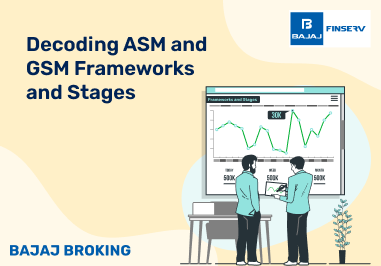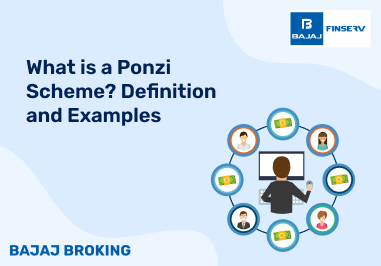Options selling is a strategy used by traders to create and sell options contracts on the stock market. With the help of options, investors or traders can increase their gains, mitigate risks etc. When it comes to answering the question “What is option selling?”, it can be defined as a derivative agreement between two parties. The agreement involves the selling of an underlying asset at a redefined price, at a later date, without the obligation to do so.
What is Option Selling?
Option selling is also known as ‘writing’ options. Under option selling, option contracts are sold to buyers. When such a contract is sold, the seller receives a premium from the buyer for taking the responsibility of selling the underlying asset at a predetermined price. This is only in case the buyer decides to buy the asset, as they have the right to but aren’t obliged to do so. When compared to option buying which has the potential to theoretically generate unlimited profits, option selling does have the potential to generate only limited profits. However, option selling also boasts of a higher probability of success when compared to the former.
When done right and with the risk of option selling in mind, this strategy can be quite profitable for traders. One of the biggest risks that option selling holds is that if in case the market moves against a trader or investor, the loss potential can be quite high and significant.
How Option Selling Differs from Option Buying
Since every single strategy in the stock market is unique and has the potential for benefits when done right, it is important to know the difference between options selling and options buying.
Option Buying
Regarding option buying, a trader has the right to buy or sell an underlying asset. This is done at a predefined price and before the option’s expiry. Options buying has the potential to generate unlimited profits, but its success is dependent on the market’s significant movement in favour of the buyer. Option buying’s risk is also only limited to the premium paid.
Option Selling
Option selling lets traders sell options contracts to buyers and collect a premium in return. Profits from selling options are limited to the premium received, but its sellers can benefit from the options time decay factor as most options expire worthless. Traders are obligated to fulfil the contract if the option is exercised potentially leading to significant losses or risks.
Key Benefits of Option Selling
There are several benefits that option selling offers to traders. One of the main advantages is the income generated by premium traders from the buyers of the options strategy. The income can be quite consistent but also depends on the market’s stability. Apart from this, the option selling strategy can also help boost the returns on a pre-existing portfolio.
Here’s an example of how: traders can use covered calls to help generate an additional income on the stock a trader already owns, with ease. These are not the only benefits of options selling. When compared to option buying, option selling has a higher probability of succeeding. This is because the possibility of post options expiring worthless is high. This places the sellers at an advantage. If this wasn’t enough, then option selling strategies like a credit spread can also mitigate any potential risks even as the income keeps on coming in.
Types of Option Selling Strategies
There are many option strategies that traders can use to generate profits for themselves.
The first is called a covered call writing strategy in which the trader sells call options on a stock that they own. It helps gather the premium while holding onto the stock. This strategy has limited risk occurring only when there is any loss of a potential upside swing in the market.
The second strategy is naked call writing in which a trader sells call options of stocks not owned by them. Here, the profit is limited to the premium the trader receives with the potential for unlimited risks upon the steep rise of the stock prices.
The third strategy is cash-secured put writing where a trader sells put options while saving cash to afford the stock if assigned. The trader can get a lower value for the stock while generating income through the premium. The risk occurs when stock prices fall below the strike price.
Next comes the naked put writing which is very similar to the cash-secured put writing strategy without any cash savings involved. This strategy is riskier since the trader is obligated to buy the stock at the strike price.
The last strategy is the credit spreads where traders sell one option and buy another with the same expiry date. Traders need to collect net premiums in this strategy while limiting losses
How to Get Started with Option Selling
Certain steps need to be followed when getting started with options selling. To begin with, you need to first open an options trading account with a broker. Once that is done and all the formalities have been completed, traders can proceed further. In the next step, traders need to choose which options to sell between the call option and the put option.
Depending on what option a trader has chosen to sell, they will then have to pick a strike price for it. When buying an option, its value only exists when the stock price either rises above or falls below the strike price. This, of course, depends on the kind of option in question. The strike price must be chosen from the range provided. Traders cannot pick any strike price. The last step involves traders deciding on an option’s time frame to define when it will expire.
How Much Margin is Required for Option Selling?
Think of the “margin” as a security deposit. This is an amount that needs to be maintained in the options trading account. By maintaining this margin, traders stay protected from sudden, big losses if and when the value of an option moves in the opposite direction of the trader’s preferences. In options trading, there are two types of margins involved; the initial margin and the maintenance margin.
The initial margin is the minimum amount to be deposited when starting trading. The margin acts as a safety net to prevent people from being too frivolous with their funds. If this amount is maintained in the account throughout an investor’s trading journey, they can trade freely.
The second is the maintenance margin, an amount that needs to always be available in a trading account. If the balance in the trading account falls below the maintenance margin, then the broker will call the investor to remind them to add more funds. In case the call is not heeded, the broker can sell some stocks from the trader’s account to restore the maintenance margin.
Common Mistakes and How to Avoid Them
There are certain mistakes that traders tend to make when it comes to options selling. Traders need to make sure that they have a carefully curated risk management strategy and zero in on the amount of capital they are willing to risk. Traders also need to remember to analyse what the current market conditions look like since high market volatility will increase the risk of losses in options trading.
When choosing expiration dates, traders need to keep their risk tolerance in mind. Options with shorter expirations are riskier even if they do generate quicker income outputs. Longer expirations on the other hand let traders wait it out till the market moves in their favour.
Traders also need to be very careful when determining the strike price of an option as strike prices closer to the market price increase the chances of the option being exercised. From monitoring their options and making adjustments to align with their investment goals to keeping in mind the brokerage and fees involved, traders can increase their potential returns to a great extent.
Conclusion
As previously stated, option selling involves the selling of option contracts to buyers. With such a sale, the seller receives a premium from the buyer, because the responsibility of selling the underlying asset at a predetermined price is taken up by the seller. The buyer may or may not choose to exercise this right as they are not obligated to do so. This is only in case the buyer decides to buy the asset, as they have the right to but aren’t obliged to do so.
Options selling makes for a great way to generate income for traders as they can keep getting premiums from different buyers for the options they have sold. However, traders must be aware of all the risks that come with option selling to mitigate any potential losses that they might face.
Disclaimer: Investments in the securities market are subject to market risk, read all related documents carefully before investing.
This content is for educational purposes only. Securities quoted are exemplary and not recommendatory.
For All Disclaimers Click Here: https://bit.ly/3Tcsfuc















